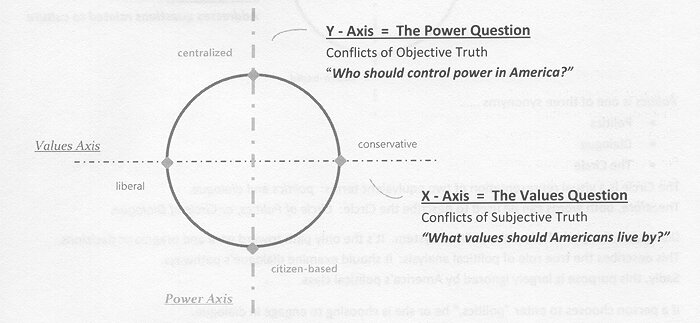Blake Pagenkopf: Rebooting Our Political Operating System
In many PCs, the first software to run after hitting the power button is called BIOS (Basic Input-Output System). BIOS loads the computer’s operating system and the individual settings that make your personal computer so...personal. A malfunction at this most basic level leads to a cascade of other problems, including error messages, poor performance, or refusing to boot at all.
It’s important to get the foundational things right, and not just in our computers. For too long, says Blake Pagenkopf, author of The Structure of Political Positions, our political discourse has been hobbled by a fundamental error—an error not just in our language but in the structures beneath that language. In particular, we tend to locate ourselves and others as points on a single line, a Left-Right spectrum. But this one-dimensional paradigm is too limiting. There are too many data points that fall outside the conventional Left-Right political modes, says Pagenkopf. We need to reboot our politics with a fuller, richer way to frame our political disagreements. We need to upgrade our political BIOS.
In today’s episode of the Strong Towns podcast, Strong Towns president Chuck Marohn talks with Pagenkopf about why we must transition from a one-dimensional view of political positions to a two-dimensional view—with a Values Axis (the familiar Left-Right/Liberal-Conservative line) but also a Power Axis, from “centralized” at the top to “citizen-based” below.
Marohn and Pagenkopf talk about how Pagenkopf’s background in architecture helped him think differently about political positions, and why the current approach obscures opportunities to work together...and delegitimizes some people altogether. They talk about why the Strong Towns movement is one part of a larger “meta-movement” that doesn’t fit traditional liberal-conservative modes. And they discuss how a two-dimensional view reveals surprising bright spots in our politics, right when we need them most.
Additional Show Notes:
Further reading from Strong Towns on politics:
“We Don’t Live in a World of Cartoon Villains,” by Daniel Herriges
“The Dignity of Local Community: A Conversation with Chris Arnade” (Podcast)
Cover image via HP.

